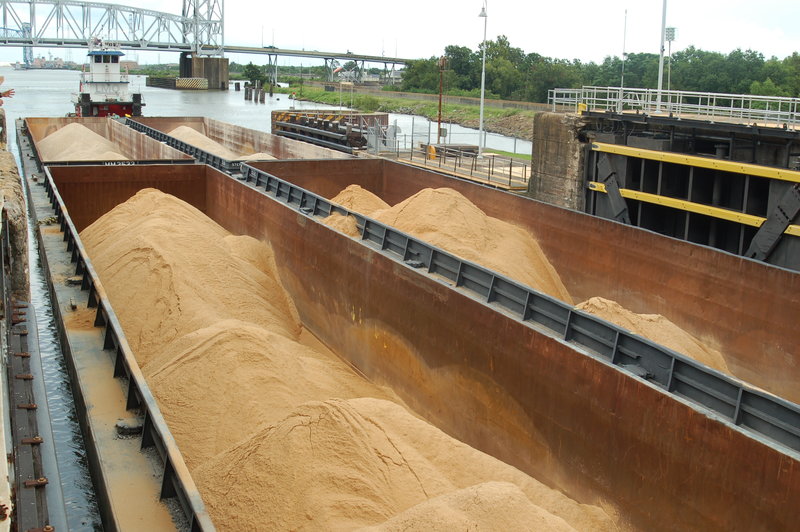A replacement for the lock on the Inner Harbor Navigation Canal in New Orleans was green-lighted in 1956. It is the only lock on the east side of the Mississippi River joining the river to the eastern segment of the Gulf Intracoastal Waterway (GIWW) via the city’s Industrial Canal, which connects the Mississippi River with Lake Pontchartrain.
The 640'x75'x31'6" Inner Harbor Navigation Canal Lock (IHNC) was built in the 1920s. Without it, barge tows would have to enter the Gulf of Mexico for part of their trips — not a good option.
On Tuesday, a group consisting of media types and officials from the Waterways Council Inc. visited the site to find that the old lock was still in place — 61 years after getting replacement approval from Washington, D.C.
“We primarily move oil and gas barges through and some grain and other products,” said Victor A. Landry III, operations project manager, operations division of the Corps of Engineers. “It’s the oldest high-use lock in the United States.”

The lock is the oldest high-use lock in the U.S., according to the Corps of Engineers. Ken Hocke photo
The lock operates continually but only locks tows through 20 hours a day Monday through Friday because it is in a high traffic area of the city with drawbridges across the canal that must remain down during rush hours. Another problem is that it’s too small for today’s barge traffic. The average transit time for a tow is 16 hours.
There’s a laundry list of reasons why the replacement has not been realized after all these years, from a lack of money to the disturbance of historic neighborhoods that front the canal to environmental and flooding concerns, weather delays and more. (Following Hurricane Katrina, much was made of the devastation of the city’s Lower Ninth Ward. The Industrial Canal separates the Lower Ninth Ward from the Upper Ninth Ward) “It’s a bottleneck, a choke point in the system,” said Landry.
It’s not that Washington hasn’t poured money into the structure. Improvements to the current lock have taken place over the decades, but a replacement lock has yet to become a reality. “We’ve done a lot of work here, and we’ve gotten some really good funding recently,” said Landry.
As to when a replacement lock could become a reality, Landry said, “It will be another year before a final report will be completed, and it will be an eight-year building period.”
For this project, that’s practically nothing.





